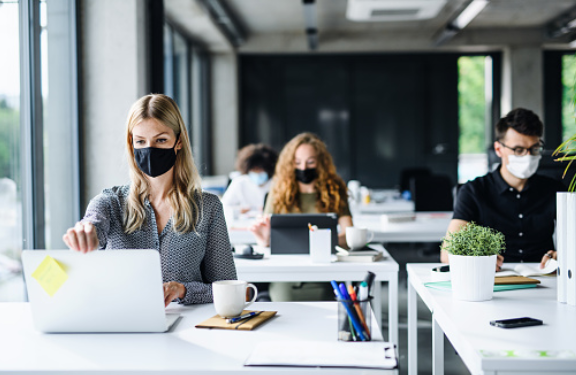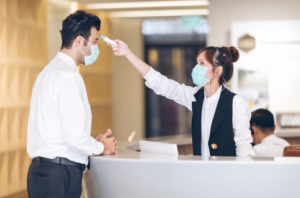Many people have wondered, “What will the workplace look like when this pandemic is over? Now we’re learning what that means. Businesses need to know all the details. We can be sure that offices that were abandoned before the pandemic began will no longer exist, perhaps forever. The most apparent impact will come when states start to lift protection orders. Building managers, landlords, and employers are also planning how to get back to work. When designing a workplace after a pandemic, it needs to be different. Besides, it is crucial to follow the guideline of health protocols. You can check out tycoonstory.com to find some explanation of how the office change after the pandemic. These are some tips to prepare the office space before allowing employees back to work in the office;

Set the Workplace Space
Open floor plans without benches and desks lined up against each other will no longer exist. Foyers with cramped furniture, conference rooms, and commercial kitchens with lots of seating will also disappear. The minimum distance between tables and chairs in the social space guidelines is six feet. Some experts and governments still consider converting existing offices to apply the six-foot rule method. Many believe this will redefine office furniture. Over the years, office furniture has gotten smaller and smaller. Now the pandemic threatens to make it challenging to live with.
Provide Health Protocol Guidelines
To prevent the spread of germs, those who rely on hot desks must have their own. Experts predict that antimicrobials used in hospitals and laboratories could find their way into offices. All buildings have hand sanitizing stations and signs reminding staff to wash their hands often. You can touch the elevator buttons by waving your hand or even using your voice. Office buildings also have safety zones or sneeze guards to protect staff. There may be other signs asking staff to choose which direction to go or where they are on the floors. Since not all office windows can be opened, ventilation is also crucial. Air conditioning systems are a good option.
Increase the Flexibility
Coworking has always offered flexibility, as it allows people to move from larger offices to smaller spaces without having to sign long-term leases. Many people don’t realize that working near other people can pose a health risk. A hot desk can spread germs, something no one has thought about. This crisis clarifies a few things. Flexibility will not disappear. Those who need to downsize will continue to enjoy the value it adds to their business. Common areas need to be cleaned at certain times or have less common space and require more social distance.
Install Health-Tech Tools
 Employers are looking for tools to help them identify colleagues with whom an infected employee has been in contact. Managers could use this type of contact tracking to find and notify all co-workers that an employee is infected with COVID-19. People should consider this idea that allows them to do the job without the need to recall interactions. In this way, it could prevent a large outbreak. This technology could only be used on company premises and could only be accessed by certain managers.
Employers are looking for tools to help them identify colleagues with whom an infected employee has been in contact. Managers could use this type of contact tracking to find and notify all co-workers that an employee is infected with COVID-19. People should consider this idea that allows them to do the job without the need to recall interactions. In this way, it could prevent a large outbreak. This technology could only be used on company premises and could only be accessed by certain managers.
Whatever your choice, more frequent and increased cleaning is an option. The use of face masks will also likely be mandatory in most companies. No matter how drastic the measures are, most people are afraid to go back to the office and want to be safe. If we are not healthy and secure, we cannot be productive. This pandemic has been a success, and we can continue to be successful if we take prudent measures.
